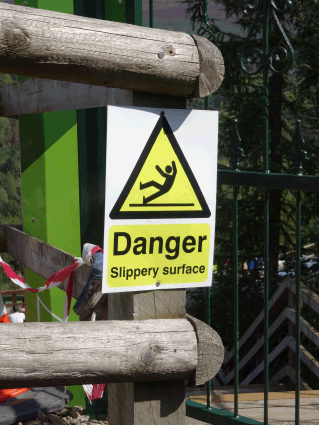
Unlike most modern inventions, we can track the history of warning signs all the way back to the prehistoric era. Many cave drawings, hieroglyphics and druidic symbols can all be traced back to some sort of warning sign, similar to warning and hazard labels today. While health and safety seems like a modern construct, labelling and signalling dangers has been present in all of human history.
The Romans, for example, were the first to adopt warning signs for roads, using stonework to measure road distances and hazards. Medieval times had them too - tradesmen of all descriptions required stone tablets outside of their businesses in order to qualify for a licence. It turns out warning and caution signs have carried the same meaning since our earliest days, it’s just easier to understand now!
Warning Signs in the Early Twentieth Century
Warning and hazard signs, though, truly entered the public consciousness with the invention of cars and the increase in transport. As the world began to be interconnected by the modern transport network, the need for easily-recognisable and standardised labels and signs became essential. This standardisation of road signs had a domino effect which changed the warning sign world as a whole.
As the years went on, signs and labels in the UK began to mimic the standardisation and uniformity of roadside signs, given their success in preventing accidents and managing traffic. As the HSE (Health and Safety Executive) matured, more and more acts were passed, pushing a variety of standardised signs and labels into the workplace.
Acts such as the Agriculture (Safety, Health and Welfare Provisions) Act 1956 and Health and Safety at Work etc Act 1974 lay the foundation for proper labelling and health and safety in agricultural and industrial industries.
The HSE continued work well into the latter half of the twentieth century, with one of the most famous signs, the green fire exit sign, invented in 1980, which speaks volumes about how fast warning signs change, adapt and interweave with popular culture.
Modern Warning and Caution Signs
The set of regulations we follow today are the Health and Safety (Safety Signs and Signals Regulations) 1996. This is to be followed by all European Union member states, entrusting all businesses to have recognisable warning signs and symbols and ensuring signs have the same meanings across each member state. Brexit is set not to affect these in any significant way.
For warning signs, the regulations define the purpose of warning and caution signs as signs used to make people aware of dangers. These signs may need to follow specifications outset by the Dangerous Substances (Notification and Marking of Sites) Regulations 1990.
All warning signs, in accordance with the 1996 regulations, must have a black band in a triangular shape and a yellow background. The centre of the sign must be filled with a standardised image of the type of hazard in black.
All of Label Source’s products are in line with these 1996 Safety Signs and Signals Regulations and ISO 1710 specifications. Ensuring your workplace is up to date on safety warnings signs and their meanings is paramount.
We’re sure to have a suitable sign or label in our extensive range of warning signs here at Label Source. “Do as the Romans do” and put warning signs to the forefront.